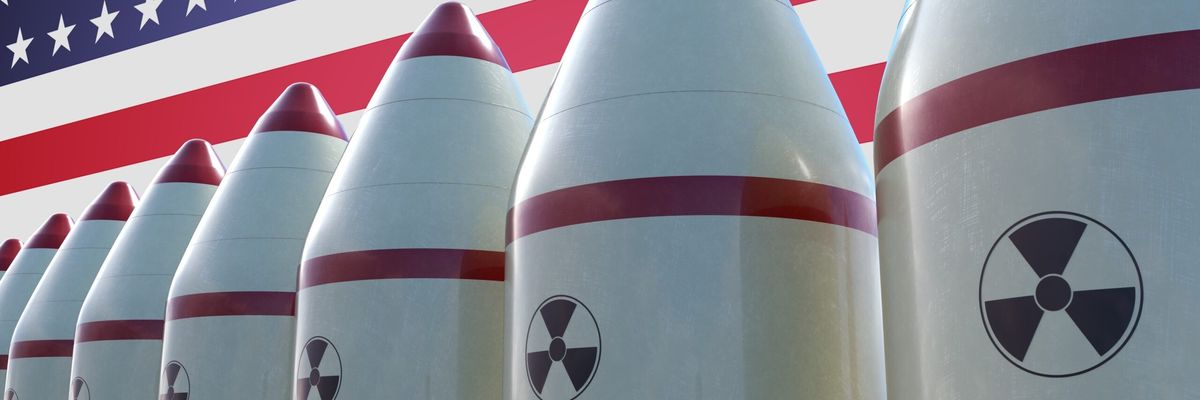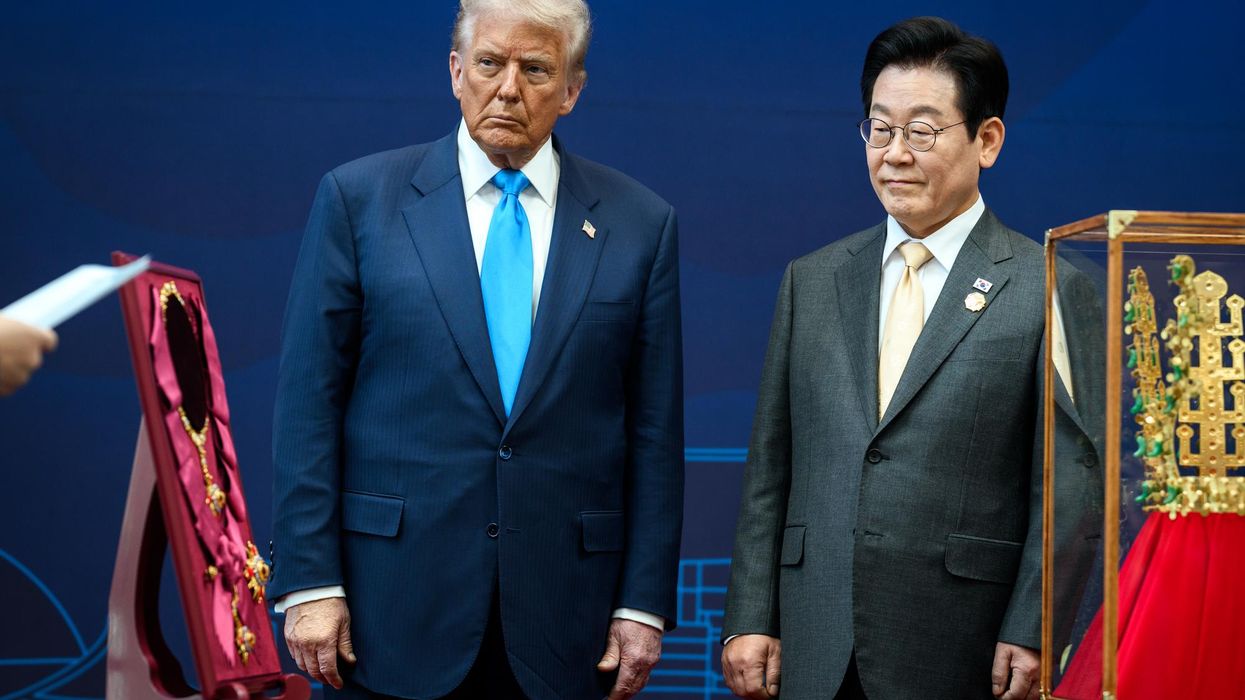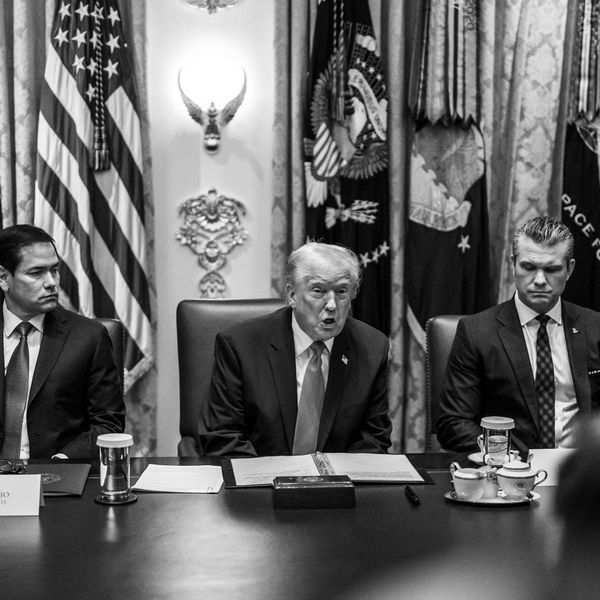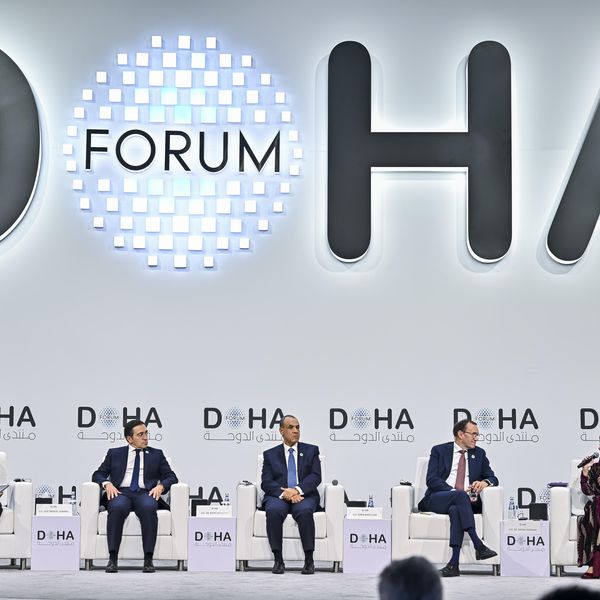As if the human suffering from the unprovoked Russian invasion of Ukraine were not bad enough, the conflict has increased the danger of nuclear weapons use and has set back international efforts to halt both vertical and horizontal proliferation.
But it may also have exposed an important opportunity for nuclear arms control.
Although the U.S. has demonstrated a determination to protect the international order by aiding Ukraine and by reinforcing a commitment to defend exposed members of the NATO alliance, the message has been mixed. Washington has acted with caution, seeking to avoid U.S.-Russian military encounters that could escalate into nuclear exchanges. So far, Moscow has shown similar reluctance to confront NATO directly, despite robust efforts by the alliance to frustrate Russian objectives in Ukraine. Both superpowers have thus far validated the effectiveness of nuclear deterrence.
The same thing cannot be said for validation of the 1970 Non-Proliferation Treaty (NPT). Nearly all members of the international community (191 states) have officially accepted an obligation to further the twin goals of curbing the emergence of new nuclear-weapons-states and achieving progress toward eliminating current nuclear arsenals. Yet four states have joined the “nuclear club” since the treaty was negotiated and progress toward eliminating nuclear weapons has stalled.
Widespread frustrations with slow progress on vertical proliferation has contributed to negotiation of a more explicit de-legitimization of nuclear weapons in the Treaty on the Prohibition of Nuclear Weapons (TPNW), which entered into force in 2021. (89 states have either ratified or signed but not yet ratified. Both the U.S and Russia remain opposed).
Unfortunately, neither Russia’s long-standing membership in the NPT nor its political commitment (in the 1994 Budapest Memorandum) to respect Ukraine’s territorial integrity, prevented it from invading Ukraine and threatening nuclear weapons use against anyone opposing the invasion.
A case can be made that the manner and extent of NATO’s eastward expansion constituted an unnecessary provocation to Moscow. But Russia’s nuclear bullying of non-nuclear Ukraine has resulted in a major setback for arms control and the international order. It does not bode well for incentivizing non-nuclear weapons states to forego the nuclear option, creating a further obstacle to reanimation of the NPT at the Treaty’s long postponed Review Conference in August.
The setback to non-proliferation objectives — both horizontal and vertical — has been the subject of voluminous commentary. The silver linings to the dark cloud of this brutal war — revitalization of NATO, admiration for the heroic sacrifices of the Ukrainian nation, the rendering of meaningful support to Kyiv as the victim of aggression, exposure of Russian military weaknesses — have been thoroughly described and analyzed in private and publicly in the pursuit of remedial policy changes. These analyses have correctly identified the outcome of any nuclear weapons use in Ukraine as likely to be disastrous.
However, one important piece of the nuclear puzzle has been given short-shrift. The size of the nuclear arsenals of Russia and the United States — more than 90 percent of the world’s total — has played no role in shaping the dynamics of the war. This reality constitutes persuasive evidence that the thousands of deployed weapons have virtually no marginal utility. When the impact of nuclear war on the combatant countries — and indeed on all others occupying our planet — is calculated, the catastrophic consequences occur even when “only” hundreds of weapons are used.
Indeed, the mutual annihilation of several dozen of the belligerents’ cities would deprive either side of any justification for claiming victory. This is the reality reflected in the 1987 Reagan-Gorbachev declaration (recently repeated by representatives of all five NPT nuclear weapons states): “Nuclear war cannot be won and must never be fought.”
It is therefore ironic that the Biden Administration appears not to have re-evaluated nuclear weapons funding levels in the latest budget. Moreover, President Biden has disregarded his campaign pledge to declare deterring nuclear attack to be the sole purpose of nuclear weapons. President Putin has deployed some 1,600 strategic warheads allowed under New START and is introducing the new weapons types he advertised in 2018. Free from arms control treaty constraints, China is said to be tripling the size of its ICBM arsenal. London, too, has announced an increase in the numbers of its deployed nuclear weapons.
If the Ukraine crisis has been the cause of our return to the Cold War necessity of “thinking the unthinkable,” then it is necessary also to recognize certain critical changes. A significant portion of the massive U.S. and Russian strategic nuclear arsenals (SSBNs at sea, mobile ICBMs on land, and bombers in the air) would survive a first-strike attack. This reality should lead strategists to reorient their thinking about the minimum levels of deployed weapons necessary to deter attack and the weapons types that increase stability.
Have the dynamics of international relations been changed by the fact that Russia now has access to some ten times as many non-strategic offensive nuclear weapons as the United States? Or is there little real-world distinction between strategic and non-strategic nuclear weapons? Would the United States be more vulnerable if it abandoned its outdated ICBM leg of the triad? Or would a US dyad retain an enormous retaliatory potential even after riding out a first-strike attack?
Despite the strategic realities of our current times, the FY 2023 nuclear weapons budget of the Biden Administration exceeds that planned by President Trump. It includes plans to develop and deploy a brand new ICBM, the $100 billion Ground-Based Strategic Deterrent (GBSD), which would, like its predecessor, need to be fired within minutes of detecting an incoming attack in order to avoid destruction. Whether or not the United States chooses to retain stationary ICBMs, nuclear deterrence will function, constraining the superpowers in confrontations like the war in Ukraine. If Russia had had only half of its current nuclear arsenal, the United States would have been no more inclined to enforce a no-fly zone over Ukraine or to deploy combat units on Ukrainian soil.
If indeed the political utility of adding the one-thousand-and-first nuclear warhead is roughly zero, then important conclusions should be drawn regarding how the United States apportions its considerable but finite resources. There are many critical national security needs, which are underfunded — from efforts to control the spread of COVID to the desperate race to slow down climate change. Perhaps the multiple billions the Congress has readily and justifiably provided to Ukraine can help prompt a reassessment of nuclear weapons needs.
By all accounts, the significant military and humanitarian aid being provided to Ukraine by the United States, along with Washington’s potent economic sanctions, is raising the costs to Russia of Putin’s blunder. Additional attention should be given to establishing a diplomatic process that would stop the fighting. The importance of attaching costs to Russia’s aggression may justify some diversion of U.S. leaders’ focus from other critical problems. But it should also cause us to reconsider support for maintaining and “modernizing” the ICBM leg of the U.S. triad. This critical shift in strategic doctrine would both increase stability and free up funds for addressing the critical issues of our time.
















